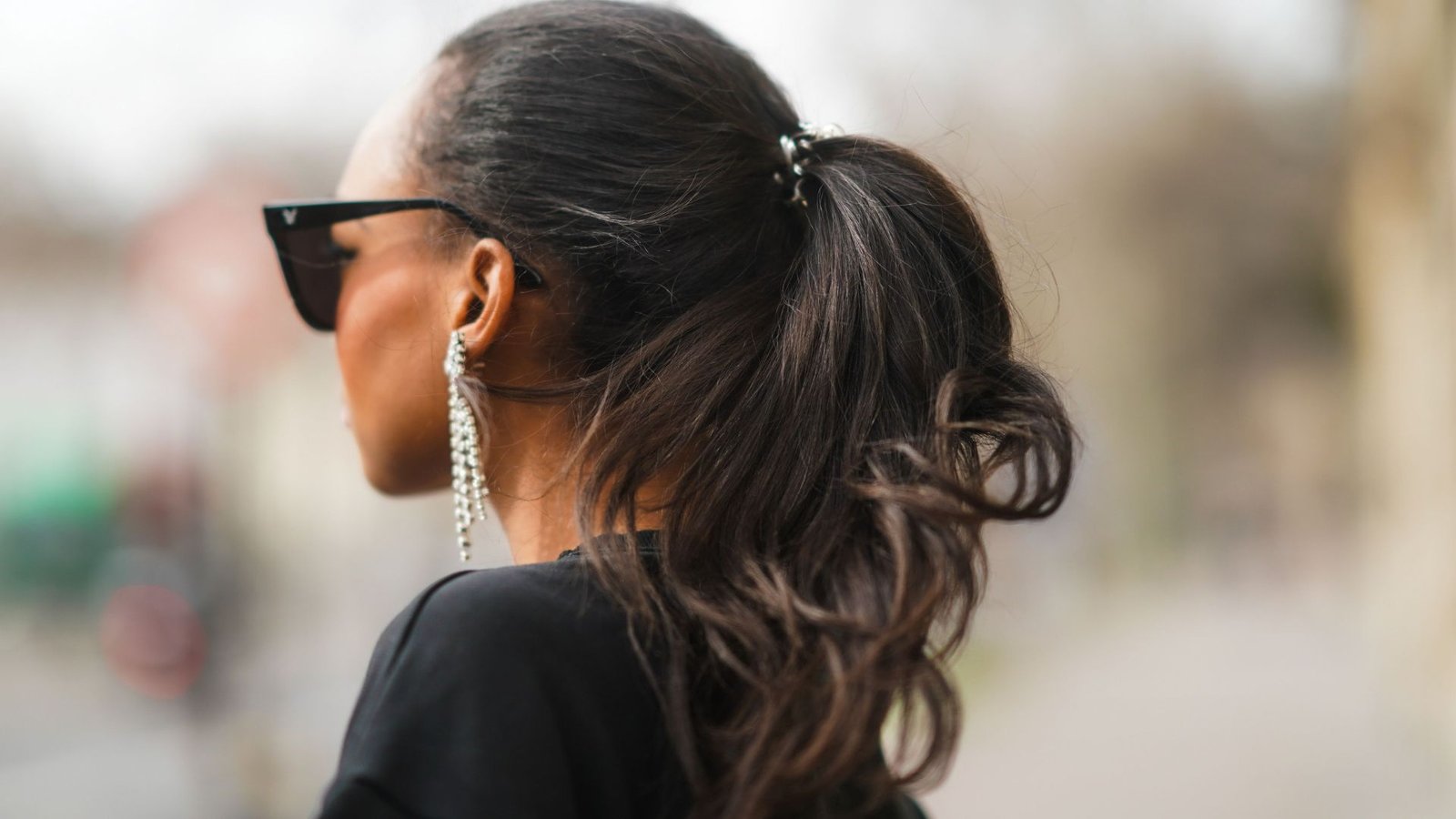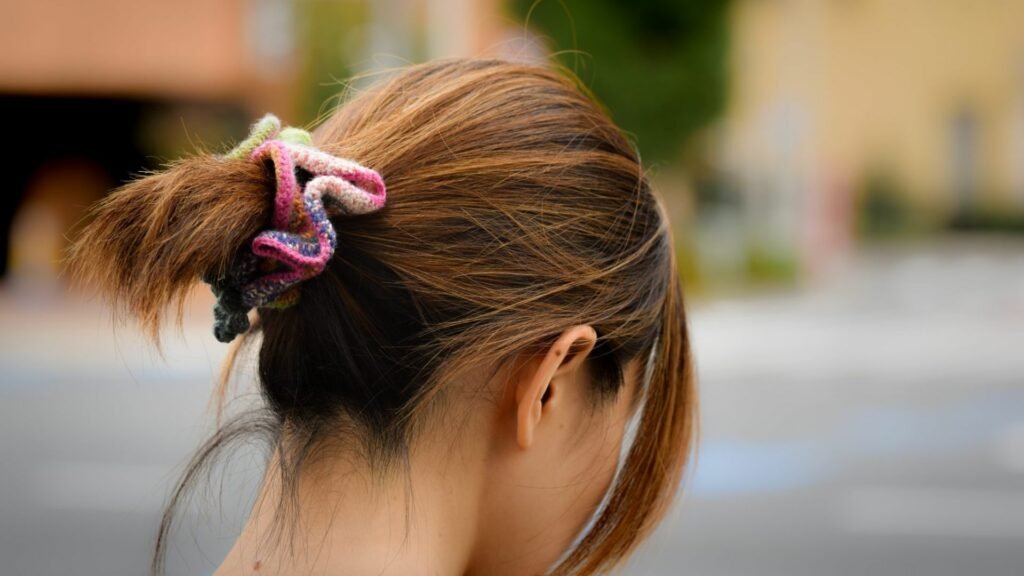|
Getting your Trinity Audio player ready...
|
Choosing the right hair ties may seem like a simple task, but it’s a decision that can impact your hair’s health and overall comfort. With a plethora of options available, ranging from traditional elastics to scrunchies and beyond, finding the perfect hair tie requires consideration of various factors. In this comprehensive guide, we explore essential tips for selecting the right hair ties to keep your locks both stylish and healthy.

Material Matters
Avoiding Metal and Rubber Bands
Traditional elastic bands with metal or rubber components can snag and break hair. Opt for hair ties made from fabric, such as cotton or silk, to reduce friction and minimize damage. These materials are gentler on your strands, preventing unnecessary breakage.
Silk Elegance
Moreover, Silk hair ties offer a luxurious option that goes beyond preventing breakage. Silk is known for its smooth texture, which reduces friction and prevents frizz. Additionally, silk doesn’t absorb moisture from your hair, helping to maintain its natural oils and hydration.
Embracing Scrunchies
Gentle Hold
Scrunchies have made a stylish comeback, and for good reason. The fabric-covered, soft design of scrunchies provides a gentler hold on your hair compared to traditional elastics. They’re less likely to leave creases and indentations, making them an excellent choice for various hairstyles.
Versatility in Style
Beyond their practicality, scrunchies come in a wide range of colours, patterns, and materials, allowing you to express your personal style. Whether you’re dressing up for an occasion or keeping it casual, there’s a scrunchie to match every outfit.
Consider Your Hair Type
Fine Hair Considerations
Individuals with fine or thin hair should opt for ties that are gentle and won’t weigh down their strands. Silk scrunchies or fabric-covered elastics are excellent choices, providing a secure hold without causing unnecessary stress on fine hair.
Thicker Hair Solutions
For those with thicker hair, wider and stronger hair ties are essential to secure your locks comfortably. Thick hair requires a hair tie that can withstand the weight and provide a secure hold throughout the day.
Elastic Width and Strength
Wide vs. Thin Elastic Bands
Consider the width of the elastic band on your hair tie. Wide bands distribute pressure more evenly, reducing the risk of breakage. However, thinner bands can be suitable for specific hairstyles, especially if you’re aiming for a sleek look.
Elastic Strength
The strength of the elastic is crucial in preventing hair breakage. Opt for hair ties with a comfortable level of stretch that won’t pull or snag your hair. If a hair tie is too tight, it can lead to tension headaches and damage the hair shaft.
Choosing Based on Hairstyle
Active Lifestyle Choices
If you lead an active lifestyle and frequently tie your hair back, consider using elastic bands with a strong and durable design. Look for ties that can withstand repeated use without losing their elasticity or breaking.
Professional or Formal Styles
For professional or formal styles, consider using sleek and minimalistic hair ties that blend seamlessly with your hair. Fabric-covered elastics or discreet bands can provide a polished appearance without compromising style.
Pay Attention to Reviews and Recommendations
User Feedback
Before purchasing hair ties, read user reviews to understand the experiences of others with similar hair types and styles. Real-life feedback can provide valuable insights into the durability, comfort, and overall performance of a particular hair tie.
Expert Recommendations
Haircare experts often share insights into the best products for maintaining healthy hair. Consult trusted hairstylists or online resources for recommendations tailored to your specific hair needs.
Rotate Your Hair Ties
To extend the life of your hair ties and prevent excessive wear and tear, rotate between multiple ties. This practice distributes the stress on the elastics and reduces the likelihood of breakage.
Regularly Replace Old Ties
Even the highest-quality hair has a lifespan. Regularly inspect your hair for signs of wear, stretching, or damage, and replace them as needed. Fresh hair ties provide a more secure hold and minimize the risk of breakage.
Temperature Considerations
Heat Resistance
If you frequently use heat styling tools, opt for heat-resistant hair. These ties are designed to withstand the heat, ensuring they won’t warp or lose elasticity when exposed to high temperatures. This is especially crucial for those who enjoy curling or straightening their hair.
Cold Weather Choices
In colder climates, hair ties made from materials like fleece or other insulating fabrics can help protect your hair from the harsh effects of cold weather. These materials can minimize frizz and static, keeping your hair looking sleek even in chilly conditions.
Conclusion
In conclusion, choosing the right hair ties goes beyond aesthetics – it’s about maintaining the health of your hair. By considering factors such as material, hair type, and hairstyle, you can select hair ties that provide a comfortable hold while preventing breakage and damage. Embrace the variety of options available and experiment with different styles to find the perfect hair ties for your unique needs. Your locks will thank you for the care and consideration you put into this seemingly simple accessory.
You may find this information useful:
How to Choose the Right Hair Accessories
How to Care for Your Hair While You Sleep
Hair Maintenance: A Comprehensive Guide
How to establish a hair care routine

